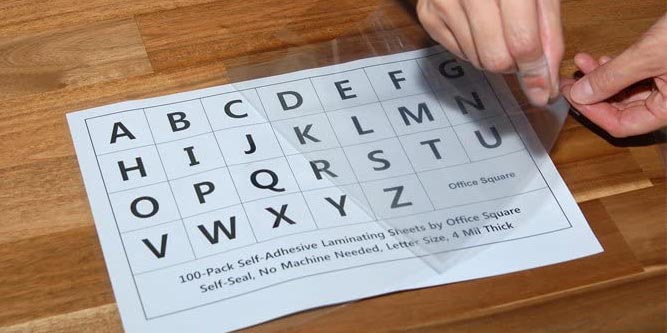No matter who you are or what you’re doing, chances are you have some important documents. If you’re like a lot of people, they probably sit in a folder, somewhere safe inside your house. And as long as those documents are squirreled away, that’s all well and good. But what happens if there’s a paper card or pass you have to carry everywhere? Paper isn’t known for its durability, and that document is going to wear down over time. Eventually, it could become illegible and unusable. If you want to protect your license, card, or pass, it could be a good idea to have it laminated.
Lamination can also be useful for many other purposes. Maybe you have a notice or sign and you want it to stay clean. If it’s been laminated, you can simply wipe it down when it gets dirty, instead of re-printing it. Or maybe there’s something you want to post outside, where it’s going to get rained on. If you don’t want your flyer to melt, it needs to be laminated.
That said, lamination can be difficult in some situations. A traditional, heat-based laminator will get the job done. But suppose you’re doing a children’s craft project? You certainly don’t want them messing with the laminator, and possibly getting burned. Those laminators can also produce an unpleasant smell when they’re being used. In an office environment, you might not want to expose your coworkers to the odor. Or, let’s say you’re doing a one-time job. A laminating machine may not even be worth your investment. In those types of cases, it can make more sense to use a self adhesive laminating sheet.
Today, we’ll be reviewing three of the best self adhesive laminating sheets we could find. We’ll begin by taking a close look at the Office Square Self-Adhesive Laminating Sheets. These are a mid-weight 4-mil sheet with a medium gloss. Next, we’ll investigate the VIOLETTO Self Adhesive Laminating Sheets. These are a high-gloss sheet with a stiffer feel to it. Last but not least, we’ll review the Avery Self-Adhesive Laminating Sheets. These are a lightweight sheet, with a convenient grid backing for easy alignment. To find out which one is right for you, we’ll go over all of their features, quirks, and benefits. After that, we’ll be able to make an accurate comparison. Let’s begin!
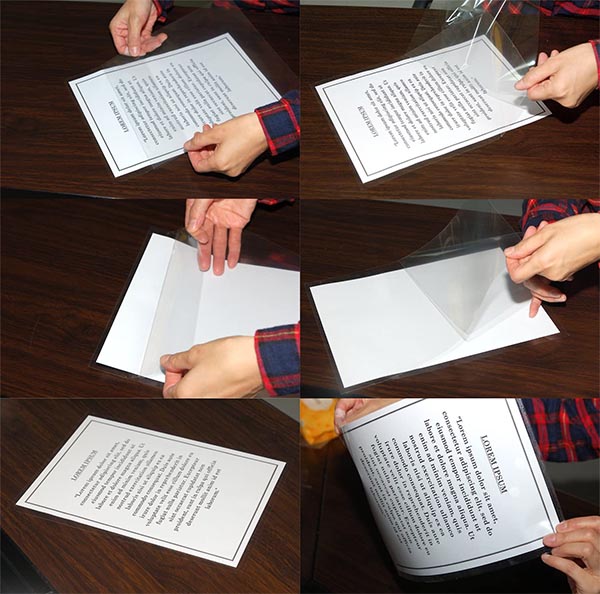
Choosing a Self Adhesive Laminating Sheet
Before we talk about any specific laminating sheets, let’s go over the basics. What’s the difference between self adhesive laminating sheets and traditional lamination? Put simply, traditional lamination uses thermal pouches and an electric laminating machine. You put your document in a pouch, put it into the machine, and it gets pulled through. As it passes through the machine, the laminating pouch is first squeezed to force out any air bubbles. It’s then heated, and the plastic sticks to the paper, and clings tight around it. With a self adhesive sheet, you just stick two sheets together, with your document in-between.
Which method is better depends on what you’re trying to do. Thermal laminating is generally the best if you’re concerned about your documents’ cosmetic appearance. With a machine, even an inexperienced user can create bubble-free laminated documents. With a self adhesive sheet, it’s not as easy. An experienced hand can certainly get almost all of the bubbles out. But if you’ve never used these sheets before, you’ll want to do some practice sheets before you start your job. That said, self adhesive sheets don’t require you to buy a machine. They can also be used where there’s no power, or in environments where a machine isn’t practical.
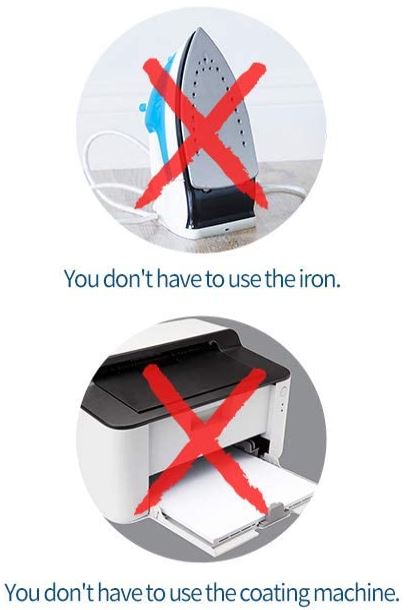
Plastic Width and Thickness
When you’re choosing a laminating sheet, you first need to make sure you’re getting the right size. For most documents, you’ll either be doing a standard 8 ½ x 11-inch sheet of paper, or something smaller. This means you’ll want to use sheets that are 9 x 12 inches in size. Why bigger than the paper? That’s because you need the sheets to meet up on all sides. Otherwise, your paper won’t be entirely covered. It also won’t be waterproof if the plastic isn’t properly mated. If your document is significantly smaller, you can just trim away any excess plastic.
Another, less important concern is the thickness. If you’re using a heated laminator, this is a major consideration, since the thickness needs to be compatible. For self adhesive sheets, that’s not an issue, since you don’t have to feed them through a slot. That said, you’ll still want to think about what you want. Do you want a lighter plastic and a correspondingly more flexible final product? Or do you want a heavier plastic and a stiffer end result? 5 mil and thicker is considered very stiff. Anything less than 3 mil is considered very thin. Anywhere between 3 and 5 mil is about average.
We should point out that these measurements are in mil, NOT millimeters (mm). A lot of people, even some manufacturers, mistakenly use mm instead of mil, but they are not the same. One mil is equal to 1/1000th of an inch, or around 0.0254mm. A 4mm laminated sheet would be as thick as two nickels stacked on top of each other! A 4 mil sheet, on the other hand, is a little more than a tenth of a millimeter thick.
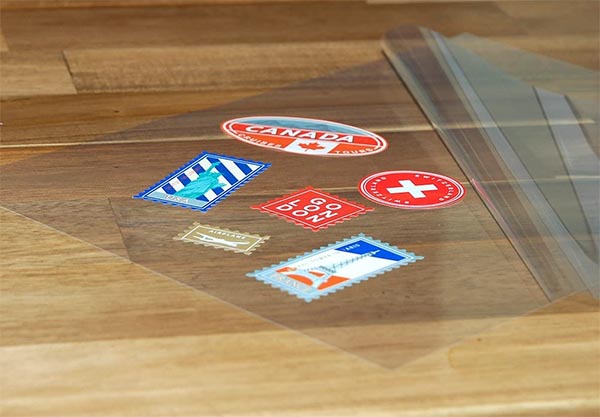
Material and Finish
Depending on what you’re doing, the material of the laminating plastic can make a big difference. That is, if you can even find out what’s in the sheet. Most companies don’t even advertise their plastic content. In general, less expensive laminating sheets contain a lot of PVC, which is a type of vinyl. PVC is cheap and readily available, and it also provides excellent UV resistance. This makes it suitable for applications where the document will be getting a lot of sun. That said, PVC is most commonly white in color, and even clear PVC can take on a clouded appearance. There are also two types of PVC: monomeric and polymeric. Polymeric tends to be more durable, and stands up better to weathering.
As an alternative to PVC, some manufacturers use polyester or PET. These materials are clearer, but they’re not suitable for all applications. That’s because they have to be manufactured in thicker layers, so they won’t work for very thin sheets.
Another common material is Bi-axially Oriented Polypropylene, or BOPP. This is a fancy way of saying that a polypropylene sheet has been stretched out in both directions. BOPP has superior strength and water-resistance to polypropylene that has not been treated in this way. It also has better clarity, which is essential if aesthetics are an important consideration.
The final thing you want to think about is the aesthetics of your laminating material. Do you want a glossy appearance, or do you prefer a matte finish? A glossy sheet will make colors pop, and give images a brighter appearance. On the downside, it will also pick up glare, which can be an issue outdoors, or under fluorescent lighting. In those scenarios, a matte laminating sheet can be a better choice.
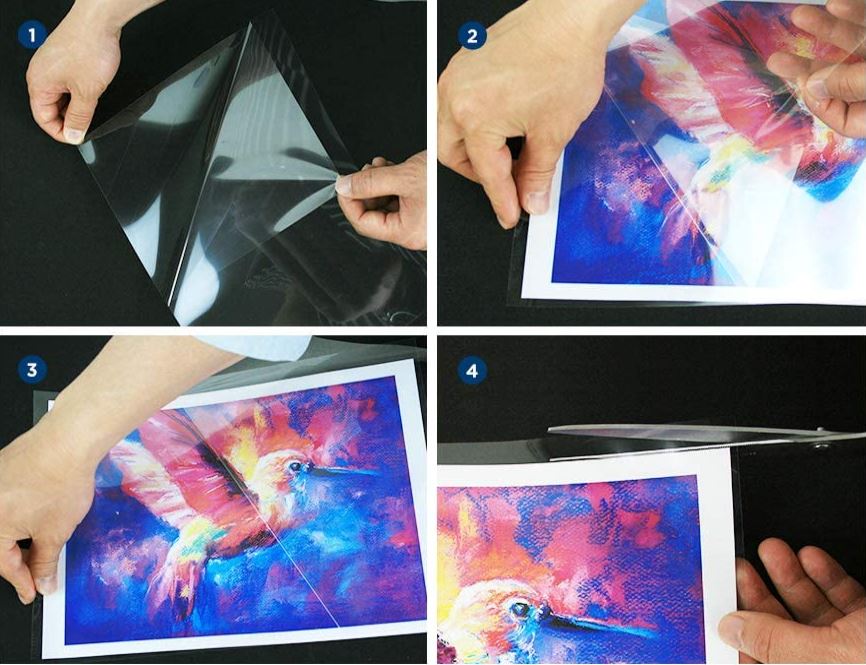
How to Use a Self Adhesive Laminating Sheet
So, how do you use these laminating sheets? To begin with, remove the backing material from your first sheet, and lay it down with the sticky side up. Some backing material has a printed grid, which can help with aligning your document or photo. If yours didn’t, it’s helpful to use graph paper or draw out your own grid with a pencil and a ruler. Regardless, put your sheet on top of the grid, and it will give you a way to align your document. Start by aligning one side exactly where you want it to start. Then, slowly press it down to the paper, working from one side to the other. As you go along, try to push out any bubbles before they’re fully formed.
Now, remove the backing material from the last inch or so of your second sheet. This is the hardest part. You want to align this edge of your second sheet as perfectly as possible with the edge of your first sheet. When the two are aligned and the edge has been adhered, slowly pull back the backing and apply the top sheet. Do this the same way as you laid down your document, carefully working out any air bubbles.
When you’re done, you can feel free to trim away any excess material. Be careful, though. The laminate will remain waterproof as long as it’s sealed around the edges. If you cut right up to the edge of your document, water could penetrate. When this happens, the entire document could delaminate and get soaked.
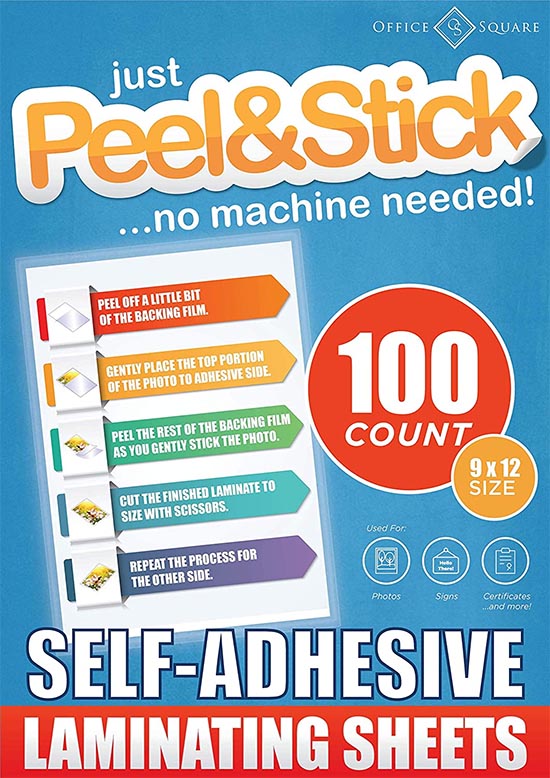
Office Square Self-Adhesive Laminating Sheets
The Office Square Self-Adhesive Laminating Sheets measure 9 x 12 inches, perfect for standard paper. They have a medium gloss finish, which provides plenty of brightness without any excessive shine. They have a clear backing, so you’ll have to make your own grid. But on the plus side, the 100-pack is a great value.
These sheets have a thickness of 4 mil, which puts them right around average. This is a good thickness for a variety of applications. On the one hand, it’s thick enough to be reasonably durable. On the other hand, it maintains enough flexibility that it doesn’t get creased too easily. It’s also easy to cut, whether you’re using scissors or a paper cutter.
The adhesive is on the weaker side, which is a little bit of a mixed bag. It’s great for beginners, since it’s easy to reposition your document. If you mess up the initial placement, you can pull it off without damaging anything. Then again, we also have concerns about the durability of this adhesive for long-term use.
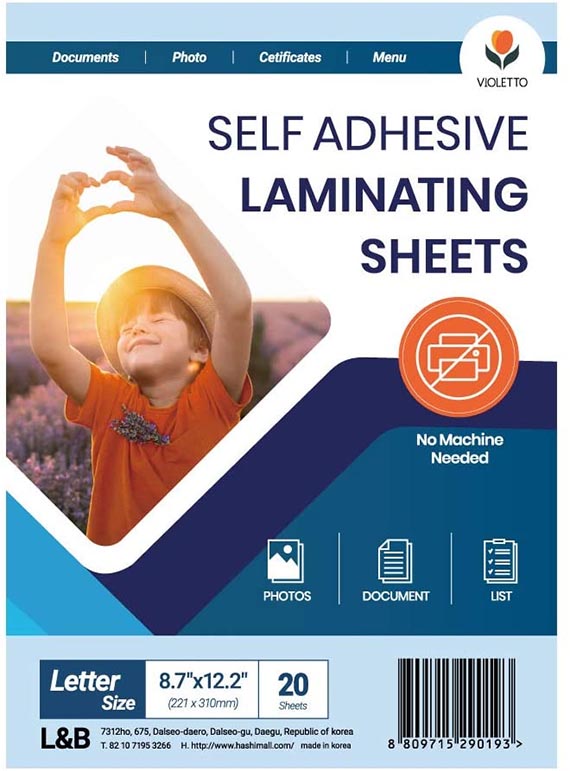
VIOLETTO Self Adhesive Laminating Sheets
The VIOLETTO Self Adhesive Laminating Sheets have a lot in common with the last ones. They have a weak adhesive, with the same attendant costs and benefits. They’re also affordable, although you can order them in a 20-, 50-, or 100-pack. That said, they have a high gloss finish, which is ideal for photos, if not for bright lighting conditions. And at 5 mil in thickness, they’re able to provide better scratch protection.
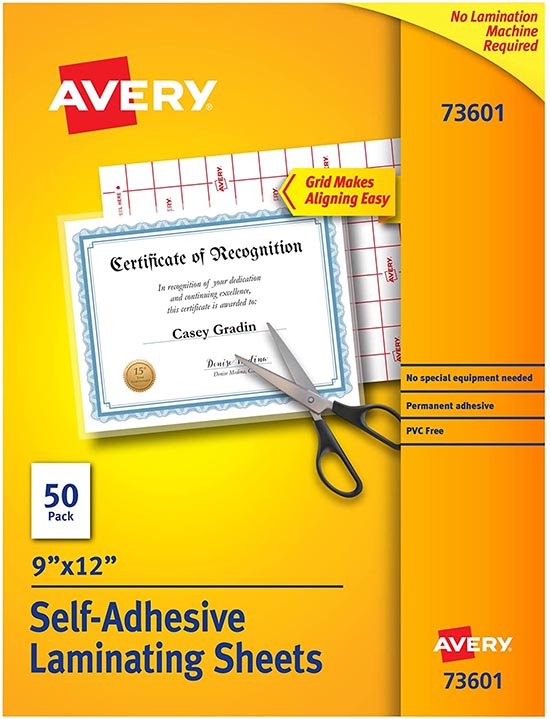
Avery Self-Adhesive Laminating Sheets
The Avery Self-Adhesive Laminating Sheets are a bit different from the other two. They have a matte appearance, but they still look great, thanks to the ultra-clear, PVC-free plastic. The backing has a grid, which makes it easy to align your documents. Perhaps most notably, the adhesive is very strong. This makes us less concerned about the risk of delamination. However, you also have to be careful about your initial placement. Repositioning your documents isn’t as easy as with the last two sheets.
These sheets are very thin, with a thickness of only 2.4 mil. As a result, they’re very flexible, as well as feeling light in your hand. The material is acid-free, so it can be used for archives and storage. On the downside, it’s not UV-resistant, so it’s not suitable for extended sun exposure.
These are premium sheets, and they’re priced accordingly. That said, you don’t have to order as many. You can even order a 2-pack if you’re only laminating one document. Other alternatives include a 10-, 50, or 500-pack.
Final Verdict
Each of these adhesive laminating sheets has its own benefits and drawbacks. The Office Square Self-Adhesive Laminating Sheets is a great choice for beginners, thanks to the weak adhesive. These sheets are also affordable, and have an attractive gloss. The only downside is that they might delaminate after a while.
The VIOLETTO Self Adhesive Laminating Sheets are the thickest of the bunch, as well as providing the brightest finish. They’re also good for beginners, albeit with the same durability concerns.
The Avery Self-Adhesive Laminating Sheets have the strongest adhesive, for the most durability. Not only that, but they’re exceptionally thin, so they’re very lightweight and flexible. On the downside, they’re not UV-resistant, so they shouldn’t be used outdoors.
Meet Ry, “TechGuru,” a 36-year-old technology enthusiast with a deep passion for tech innovations. With extensive experience, he specializes in gaming hardware and software, and has expertise in gadgets, custom PCs, and audio.
Besides writing about tech and reviewing new products, he enjoys traveling, hiking, and photography. Committed to keeping up with the latest industry trends, he aims to guide readers in making informed tech decisions.

